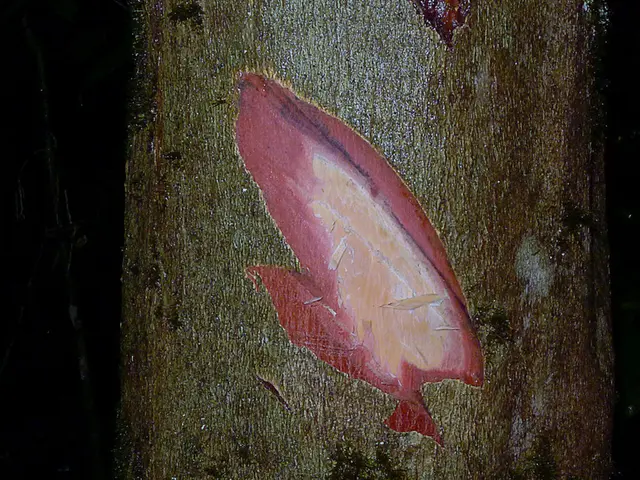A Fresh Take on Why You Should Ditch Last Year's Sunscreen
Use sunscreen from a different year than the previous one. - Avoiding outdated sunscreens: Reasons to switch to this year's sun protection product
Get excited to crack open a brand-new bottle of sunscreen this spring! But think twice about reaching for the almost empty one languishing in your bathroom cabinet. There's a chance it might not offer the skin protection you desire.
You can usually find out the sunscreen's lifespan after being opened on its packaging. An open jar symbol on the bottle with "12M" inside means the sunscreen is good for up to 12 months. However, manufacturers only promise full protection within that time. Improper storage can lead to sunscreen losing effectiveness more swiftly, such as if it's exposed to high heat or left in a warm car for an extended period.
Air Plays a Cruel Trick on Sunscreen Ingredients
Professor Eckhard Breitbart, a dermatologist, generally advises buying a fresh pack over using last season's sunscreen. In an interview with "Apotheken Umschau", he explains: Once you open the sunscreen container, oxygen seeps in. This causes oxidation, altering the ingredients and weakening the protective function.
Scientists from the Sorbonne and the national research agency CNRS uncovered another concern in a 2021 study on sunscreen containing the UV filter Octocrylene. Over time, the carcinogenic and allergy-inducing molecule Benzophenone forms in the creams.
The Evil Twin of Sunscreen: Benzophenone
The researchers looked at 17 sunscreen products with a SPF (Sun Protection Factor) of 50. Octocrylene was present in 16 of them. The researchers placed the sunscreens in an incubator for six weeks, consisting of temperatures of 40°C and humidity of 75%. No Benzophenone was found in the sunscreen without Octocrylene. However, in the other 16 sunscreens, 39 mg/kg of Benzophenone was found in the original state, which increased to 75 mg/kg after six weeks.
The North Rhine-Westphalia Consumer Center suggests that mineral UV filters like "Titanium dioxide" or "Zinc Oxide" are generally more resilient and can be used for longer periods. The presence of Octocrylene can be identified by checking the ingredients list, where it's typically listed as "Octocrylene".
Additional Information:
- Why Old Sunscreen Might Cause Skin Problems - The degradation of sunscreen ingredients over time leads to reduced effectiveness, leaving your skin vulnerable to sunburn and accelerated skin aging.
- Shelf Life of Sunscreen - Without and With Opening - The FDA recommends a three-year shelf life for unopened sunscreen if properly stored, while opened sunscreen should ideally be used within 12-24 months.
- The Role of Oxygen and Heat in Sunscreen Degradation - Oxygen causes oxidation, which weakens the protective function of sunscreen, while high temperatures accelerate this process.
References: Sorbonne Study, Apotheken Umschau, North Rhine-Westphalia Consumer Center
- Sunscreen
- UV Filters
- Carcinogenic Compounds
The Commission, following the concerns about the longevity and potential health risks of sunscreen, has also adopted a proposal for a directive on the protection of workers from the risks related to exposure to ionizing radiation in the health-and-wellness sector, particularly in the field of skin care, where frequent handling of sunscreen may occur. Science plays a crucial role in unveiling the harmful effects of certain sunscreen ingredients, such as the carcinogenic and allergy-inducing molecule Benzophenone, which forms over time in sunscreens containing the UV filter Octocrylene.







